

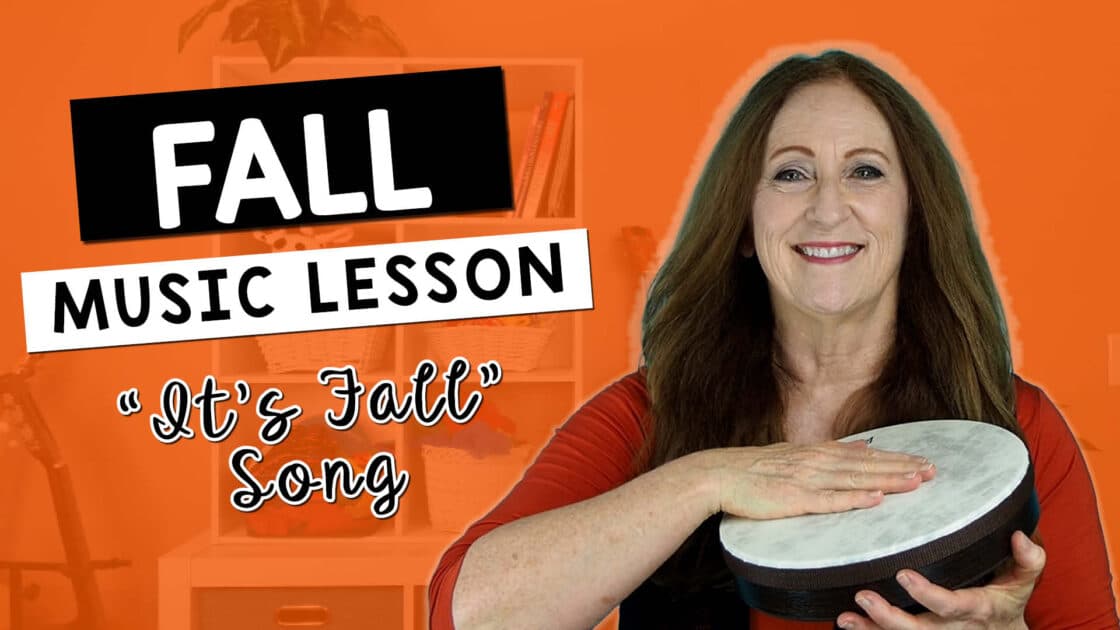
I am sharing five different things you can do with one cute and easy to learn fall song “It’s Fall”.
I’ll share the ukulele version, singing, hand actions, scarf movement and playing instruments. This activity can be used in preschool music or kindergarten through second grades.
This song is a free resource on my SING PLAY CREATE KIDS MUSIC CHANNEL and it’s also a free download.
The song activity comes with music tracks and a presentation.
You can use the chords and play the ukulele or guitar and sing or you can use the background tracks and have the kids sing along to that.
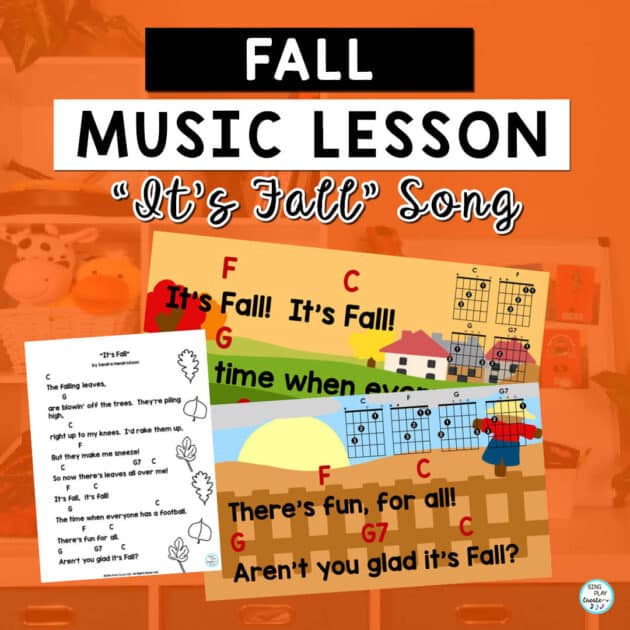
One way you can use this song is of course, to use it as a ukulele music lesson.
The chords are C, F and G7
When I teach the song to ukulele students, I’ll just have them play on the steady beat as they sing the song before I have them learn a strum pattern.
Once they can sing and play on a steady beat, then we can add in that strum pattern and hopefully they’ll be able to sing and play along and strum at the same time.
If you’re using ukulele in your classes with younger students like I did in third grade, I have them split into two groups. One group can sing the song and the other group can practice playing.
Then they switch.
All students have a ukulele. And I have them store them in their boxes because I have a cupboard that was big enough for them to put back in their ukulele box.
I have a system where they can take it out of the box and then I will have them play their ukulele babies, what we called it, because they’re holding it in the cradle of their arms.
Then I have them rest their ukulele baby and put it on top of their box. And then it was easy for them to sing the song while the other group played the chords. But that’s just one way you can use the song by playing it on the ukulele.
Action songs are especially good for preschool and kindergarten children.
They love to move and singing and moving together is another way to help those brain connections as well as body connections grow stronger.
I share more about the importance of action songs in this post:
First I’ll wave my hands like leaves “The falling leaves are blowin’ off the trees.”
Then I place my hands on my knees. “They’re piling high right up to my knees”.
I pretend to rake up the leaves. “I’d rake them up but they make me-“
Pretend to sneeze “sneeze”.
I toss the leaves and spin around. “And now there’s leaves all over me!”
I toss on the “it’s fall”.
Throw a football. “The time when everyone has a football.”
Dance on “there’s fun for all”.
Point out “aren’t you glad”, wave arms “it’s fall”.
Those are some actions that you can use in your classroom.
You can spend a whole class time learning just the actions, and then the next time you can have them perform for each other.
This is a great performance opportunity you can use in your classroom. Let’s split the class in half.
We’re talking kindergarten, first grade here, and we’re going to have half the class play the steady beat.
You might want shakers for the steady beat instead of drums.
And then the other half the class is going to sing for them and do the actions.
Another way to use this song is to help your kindergartners and first graders learn the steady beat.
Have them sing along to the accompaniment tracks and then they can pat the beat.
After we play the steady beat on our knees or we march around the circle to feel the steady beat.
Then we can bring in an instrument and they can play the drum beat or shakers as they sing the song again.
If you find that you’re dealing with your younger students and they can sing and play the beat at the same time, and let’s say you want to use this as an assessment for steady beat or checking on how everybody’s doing.
Again, divide the class in half and half, sing the song and pretend to have the leaves blowing around and down on their knees and raking and sneezing with the actions and the other half the class can be playing the drum beat.
Then you can have them switch their parts.
It’s a great way to make the lesson a little more meaningful. It takes a little longer, but the students get a chance to really absorb the material and internalize and hear with their inner ear.
They’re hearing the beat when they’re playing. But then they’re also hearing the beat when they’re singing.
So you’re giving them lots of opportunities to experience a steady beat.
If you want to use the song for older grades, maybe your first and second graders, even third graders, you can add in a rhythmic ostinato to the song and have a steady beat going at the same time.
And then as an extension activity after students have experience playing the beat, playing the rhythm, and then putting it together, then you can have them create their own ostinato in small groups using a variety of leafy sounding instruments like woodblocks or shakers or guiros.
Tambourines too make a rustling or shaking sound. So that will be a really fun activity to do with your third graders and have a little improvisation creating their own ostinato.
You may want to break up these activities over 2-3 classtimes.
SONG AND BEAT
RHYTHMS/BEAT/SINGING
CREATE/BEAT/RHYTHMS/SINGING
This is a step between whole class activity and centers. So actually, you’re dividing the class into three groups.
Let’s say there’s 30 children, so there’s ten in each group, but they’re actually all working together to make music.
This is a good pre center activity because later you can take rhythm cards and put them in a center with some of those leafy sounding instruments and then they will know what they’re supposed to do to the music.
Another center will be playing the beat and you can have some drums there for that group, and another center can be singing and doing the actions.
Play the music and each group will be doing their part.
Then you can stop the song and then they can switch groups.
This is an easy type of activity that helps them learn to be independent learners.
It also breaks them into groups, which helps with classroom management, and it adds a lot of variety of teaching and learning opportunities for your students.
It will be very easy then to put them in groups of perhaps five students, 4 to 6, and then they will work as an ensemble doing all three things in one group.
So, if you have six students in a group, then two can sing, two can play the ostinato and two can play the beat.
You will have them work independently in their small groups without the music playing, because at this point, most likely they can sing the song without any help.
And then you can go to each of these groups and then you can really help them and see where they are struggling and offer suggestions and guide them.
After they work in those kind of small groups, they can create their own leafy ostinato.
So they’re going to create their own ostinato. You can even use a rhythm sheet.
I have some in the FREE RESOURCE LIBRARY, but you know, you can have them go up to the board and draw a one line staff and then have them write their rhythm for their group and then have everybody play their ostinato from their groups.
Then they can play their rhythms.
I feel like this type of activity can really help your students learn the concepts, but also how learn how music is made, how it’s put together and also how they can create something of their own.
Another type of activity you can do with the younger students because they’re not going to be able to create the rhythm, it to have them experiment with different instruments that might sound like leaves or twigs crunching. Instruments like shakers and drums and woodblocks and a guiro or whatever you have in your classroom. Sand blocks are really good too for this.
Have the students play the different instruments during the song.
Let’s pretend that everyone is a leaf off the tree. Here I am. I’m the big tree and you’re all the little leaves and I’m going to give you an instrument. And while I sing the song, I want you to make some leaf sounds for me.
Do this a couple of times through to give everybody a chance to do it. And then have them trade instruments.
You may want to only have 5 students playing and everyone else using scarves. That way everyone can hear the instruments better.
I find that it’s important not to rush through things too quickly,
I know our young students have short attention spans, but you can change the activity without necessarily changing the song.
So we’re using this one song, but we’re going to do a beat and we’re going to do actions and then we’re going to do some instruments with it in a lesson.
And that’s going to be our main lesson activity.
The last activity, of course, is a scarf activity. So, after we’ve done instruments, it will be a great time to bring out scarves.
And the first time you do it, you might want to just have everyone stand where they are. But there’s some specific actions you can do.
Or you can just play the music and let them pretend to be the falling leaves and see what they do.
In second and third grades. I usually do that option.
I will just play the music and say, show me what you hear. Show me what you feel. Show me the story of the song.
Because they’ve sang it. They’ve played the beat, they’ve played the rhythmic ostinato, or they’ve done the instrument experiment, and then they are ready to do something with it.
And even if you don’t do that all the same class time, you can bring up the song and the actions and the ostinato or the rhythm instrument activity and then do the scarves the next time. That will be okay too.
So our scarf is a leaf on the tree. And what happens when the leaves fall down?
The falling leaves are blowing in the breeze and then having to go all the way down to their toes.
They’re piling up high to my knees and then have them stop on their knees.
And if they can, they can grab the scarf with both hands and then rake with the scarf.
Then pretend to sneeze. Hold the scarf or fling it out!
Wave around on the refrain:
It’s fall. It’s the time when everyone throws a football. It’s fun for all. Aren’t you glad Its fall?
And then toss and catch or toss and drop to the ground.
If your students work well in groups, this will be a great time to divide them and have them create something with their scarves. One of them might end up being the tree and stand there while the other one’s dance around the tree to the actions.
I love doing that kind of activity. I love seeing the students creative, really. It really brings that out in them, and I find that it is just the most joyful thing in the music room to see the students really internalizing the whole feel of the song and then expressing it through movement.
If you’re looking for more FALL MUSIC AND MOVEMENT ACTIVITIES check out these resources.
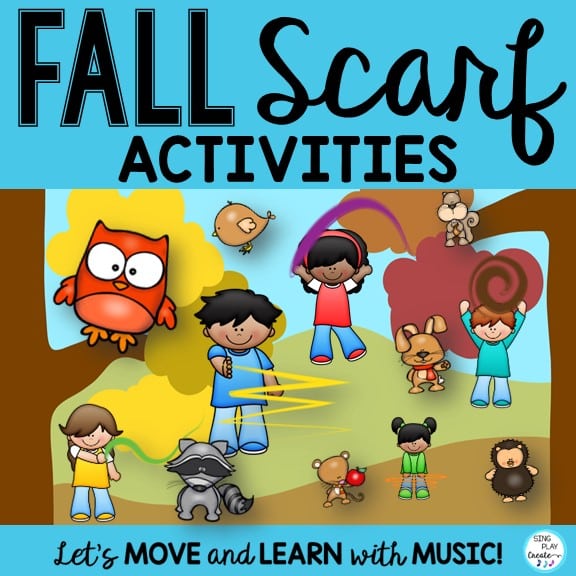
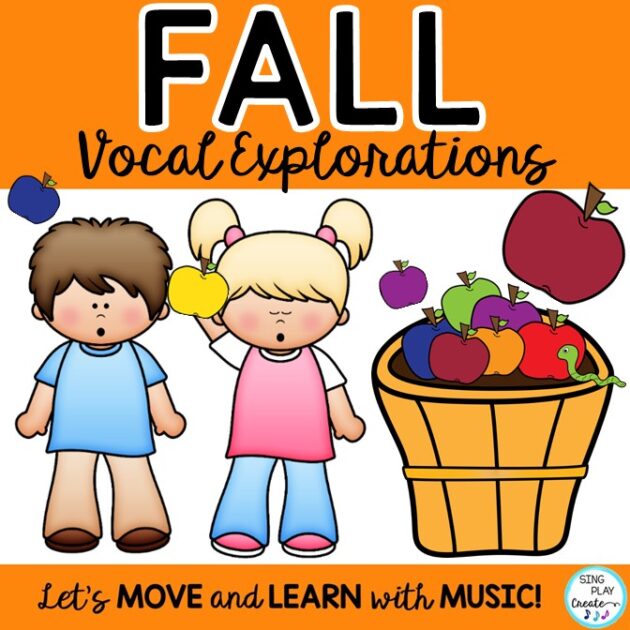
Music Lesson “Fall is Here”: Orff Arrangement, Solfege, Lesson Plans TPT LINK
Music Lesson “Fall is Here”: Orff Arrangement, Solfege, Lesson Plans WEB SHOP
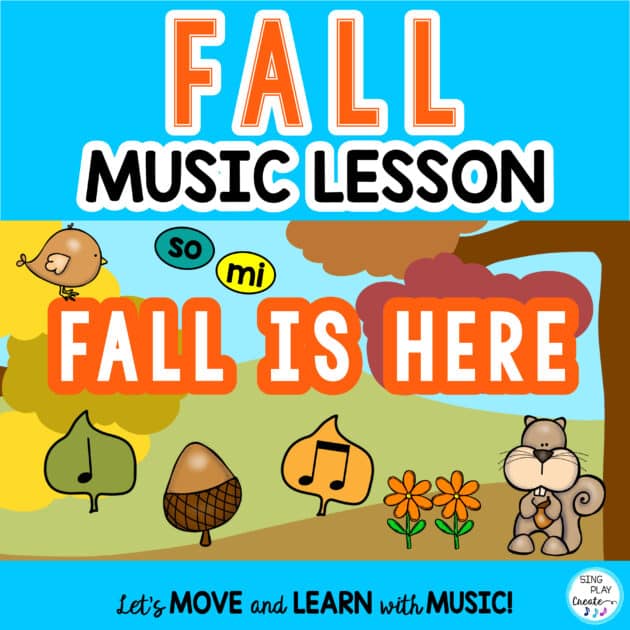
Fall PREK-K-1 Music Lessons, Songs, Activities & Printables Bundle TPT
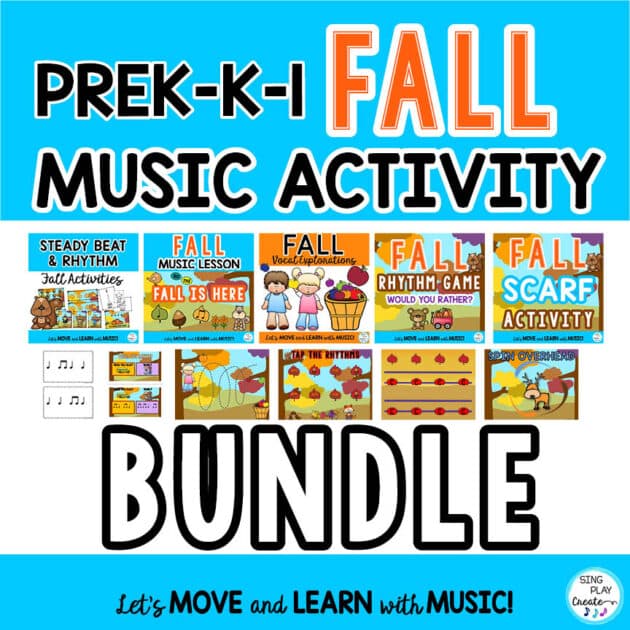
Fall Elementary Music Class Lesson Bundle of Music Activities K-6 TPT
Fall Elementary Music Class Lesson Bundle of Music Activities K-6 WEB SHOP
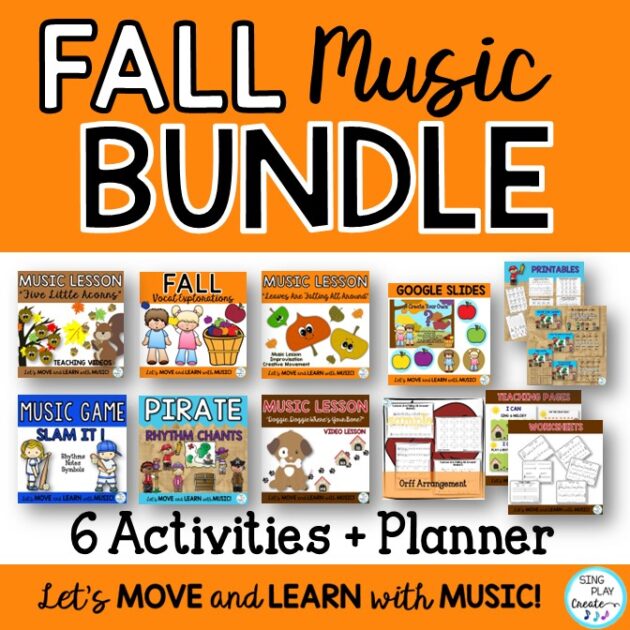
Thank you for reading this post.
Let’s move and learn with music!

Please share this post
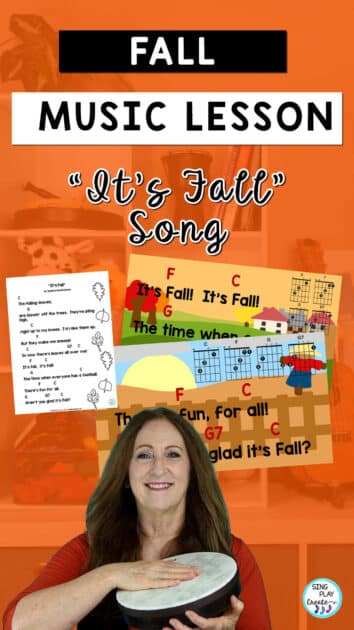
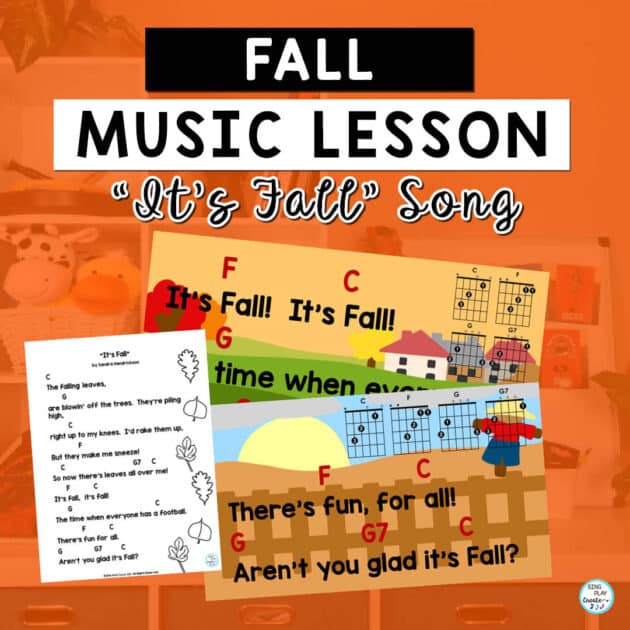
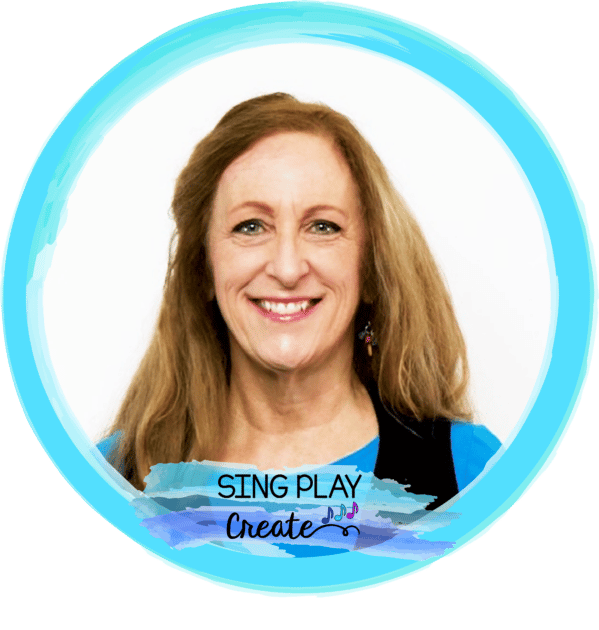
Hi there! I’m Sandra, one of the authors behind Sing Play Create. My goal is to provide teachers with interactive resources and activities to improve the effectiveness of their teaching and enhance student learning.
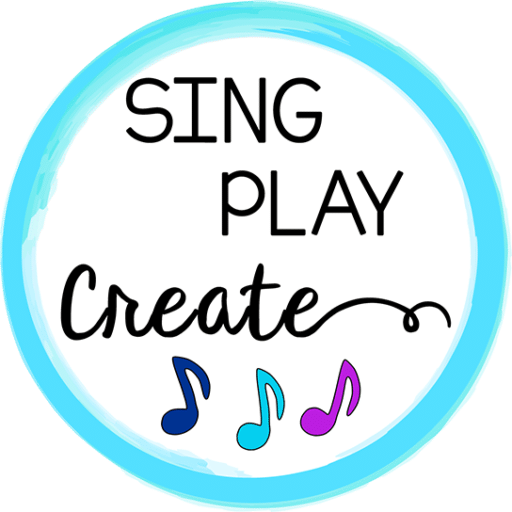
© 2022 Sing Play Create. All Rights Reserved.
One Response